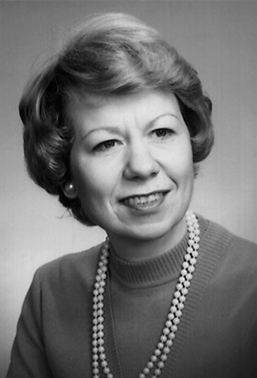
When Joann Kirchner entered the media department of Klemtner Advertising in the early ’50s, buying medical journal advertising space was primarily a judgmental exercise with virtually no hard readership data available. The Rx industry was experiencing remarkable growth based on the “wonder drugs” produced by revolutionary scientific research following WWII. Since sales force numbers were small (Lilly’s was the largest at 1,000 and all were pharmacists!), a product’s marketing mix included heavy commitments to print promotion in journals and direct mail. Accordingly, sizable sums were being spent on journal space. The few mass and specialty journals on the scene—Medical Economics, Modern Medicine, JAMA, Pediatrics, and Annals of Internal Medicine—were in an ideal position as the only promotional channels available. They generated research surveys supporting claims to high readership, but, in reality, these data were not crucial in the decision process. What counted was salesmanship and the personality of the journals’ representatives and the rapport they could develop with agency media directors, ad managers, and companies’ top executives.
By family background and education, Joann was not about to accept the subjectivity and cronyism of this process. Her father was a well-known physicist who had worked with Albert Einstein at Princeton on the Manhattan Project. He imbued her with an understanding of scientific methods by his example and by the considerable time he spent with her while she was in school challenging her with mathematical problems and reasoning puzzles. She was also well-grounded academically with a science degree from Wisconsin and a graduate degree in psychology from Columbia. She had a thorough knowledge of statistics—an expertise which was to prove valuable in evaluating media research.
This intellectual foundation prepared her to encourage and accept efforts to objectively define medical journal readership. Most importantly, as Klemtner’s media director, she had access to two heavy journal spenders—Pfizer and Ayerst. She pointed out to these cost-sensitive clients the potential waste of advertising dollars in the “judgmental” system. She advocated that they conduct their own readership studies or subscribe to the new, independent surveys, like Media-Chek, which were entering the field. When these powerful purchasers of journal space, influenced by Kirchner, began requesting better research and data linking readership to prescribing, the rest of the industry followed. Measuring physicians’ journal preferences and the time spent by them reading the various journals assumed the central role in determining journal selection. The buying of journal space became a serious business discipline and not a matter of salesmanship and personal relationships.
Joann Kirchner played a pivotal role in implementing this change in Rx marketing. But she was a forerunner for two other changes as well. First, by the high level of her performance, she elevated the position of media director at medical advertising agencies. Second, she made a strong contribution to the cause of feminism in Rx marketing (Although, as one close friend put it, “Joann would be the last person to burn her bra.”) She was one of the first women to hold a top executive position at a medical advertising agency. After leaving Klemtner, she went to Boclaro, the in-house media-buying service of Bristol-Myers Squibb, where she was in charge of purchasing all healthcare media for the corporation.
After 6 years in this position, she moved to Medical Economics in a leadership role in directing the publication’s marketing research. While there, she decided to put together a reference tool for the company’s sales force. Titled Healthcare Media Planning, the work became much more than a simple guide. It was a compilation of all she had learned about in the evaluating, buying, and managing of medical journal space.
She was at work on the book when she was diagnosed with advanced breast cancer that had metastasized. In light of this, the job of putting down on paper all she had learned in some 30 years in the business took on added significance. She worked hard to finish the book against a grim deadline. With help from her friends, who often recorded and transcribed her thoughts, she completed the task before she died in 1985. Medical Economics released the work the next year.